The Changing Face of Defense in the NFL: Defensive Back
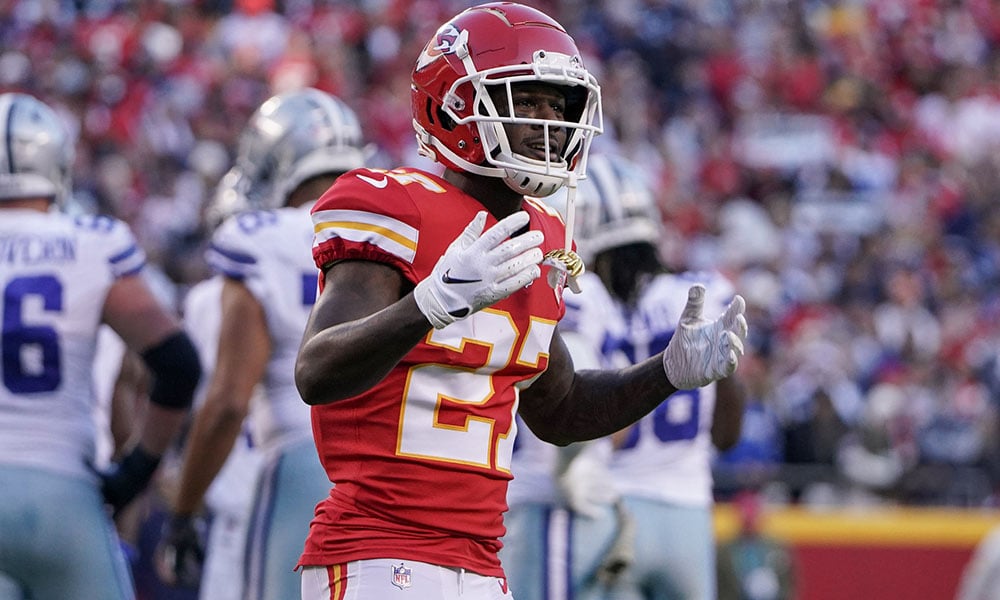
This mini-series of articles is intended to show what those changes look like on the defensive side of the NFL and ask how your leagues and strategy can change to take account and advantage of them.
You can find the first article in the series here and the second here.
This article will refer to a number of different secondary packages. Most of them are self-explanatory but to be clear about how they’ve been defined:
- Base: two corners and two safeties.
- Nickel: three corners and two safeties.
- Dime: four corners and two safeties.
- Big nickel: two corners and three safeties.
- Big dime: three corners and three safeties.
- Dime plus: four corners and three safeties.
- DB Heaven: eight or more defensive backs.
- Light: Fewer than four defensive backs (generally goal-line and short-yardage).
- Skinny nickel: four corners and one safety.
- Huge dime: two corners and four safeties.
General Secondary trends
The first chart shows which secondaries teams have used in the NFL regular season over the last decade.
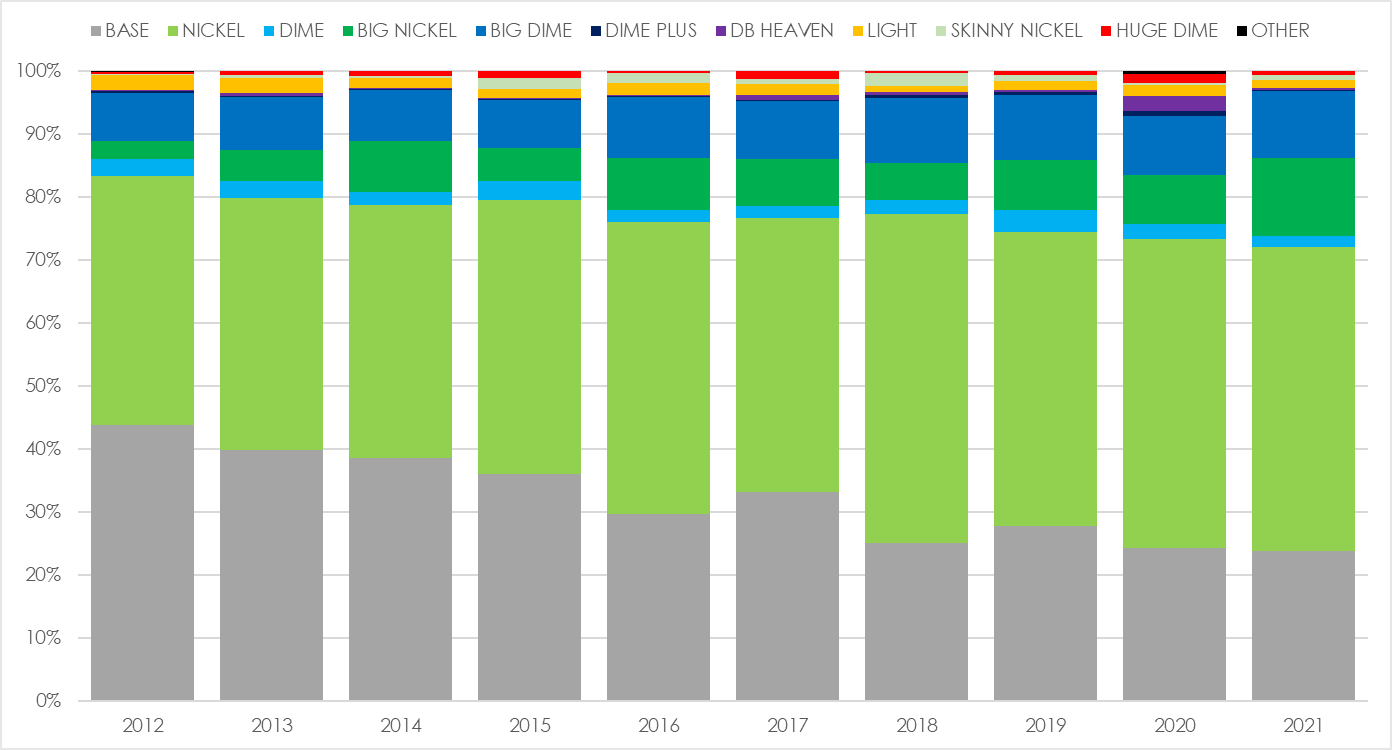
A few truths leap off the page here.
- Nickel is by far the most common secondary used in today’s NFL, and it has been for a long time.
- The amount of base secondary is dropping – rapidly.
- All other secondaries combine to make up less than 30% of snaps. A third of all snaps is not negligible, but they are individually a lot less common.
If we show the same data as a line graph, then you can see the relative moves for base and nickel more clearly.

Pretty clear, eh?
And if we simplify that a bit more and cluster together all the various different flavors of nickel and dime, it looks like this:
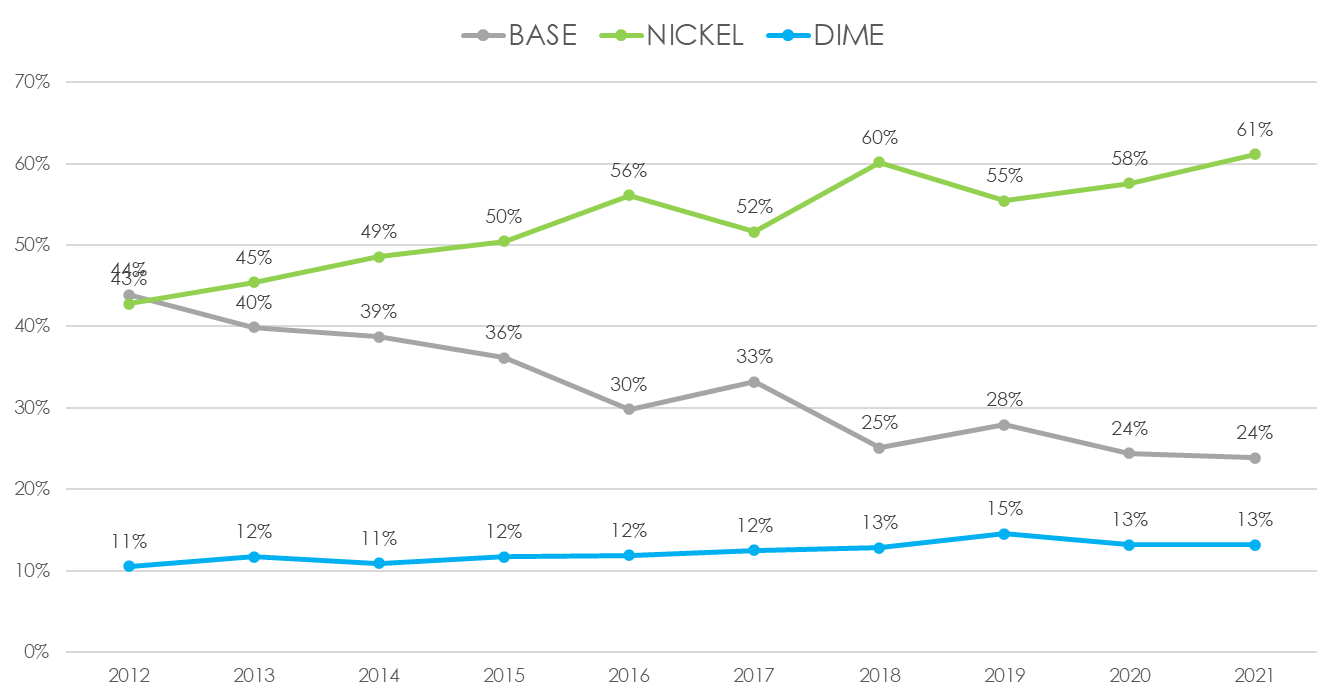
A decade ago, base secondaries were the most common in the NFL, just.
In 2021, we saw roughly two and half more nickel snaps than base. That is an incredibly fast diaspora. When you think of how the NFL has moved towards being a passing league then this is probably not surprising but note that dime packages have only risen slowly during the same period.
Use of safeties
Okay. We’ve established that nickel is rising fast (much faster than the “Nickel is the new base” crew understand but there are various ways to run a nickel secondary.
This chart shows the proportional change of how many safeties defenses have used over the last decade.

Snaps with two safeties on the field have dropped from 86% (nearly nine in ten snaps) to just 74%. And snaps with three safeties on the field have risen from just 11% to almost a quarter at 23%. So roughly one in four NFL snaps sees three safeties on the field.
If you read the last article about LB usage, this will not surprise you at all. Offenses are trying to create mismatches on linebackers, so defenses have taken to putting an extra safety on the field to avoid their LBs being caught trying to cover receivers, athletic TEs and shifty backs. This is one of the key drivers behind the fact that the majority of NFL teams do not deploy two full-time linebackers anymore.
Use of cornerbacks
Now you know how use of multiple-safety packages is growing, what about cornerbacks?
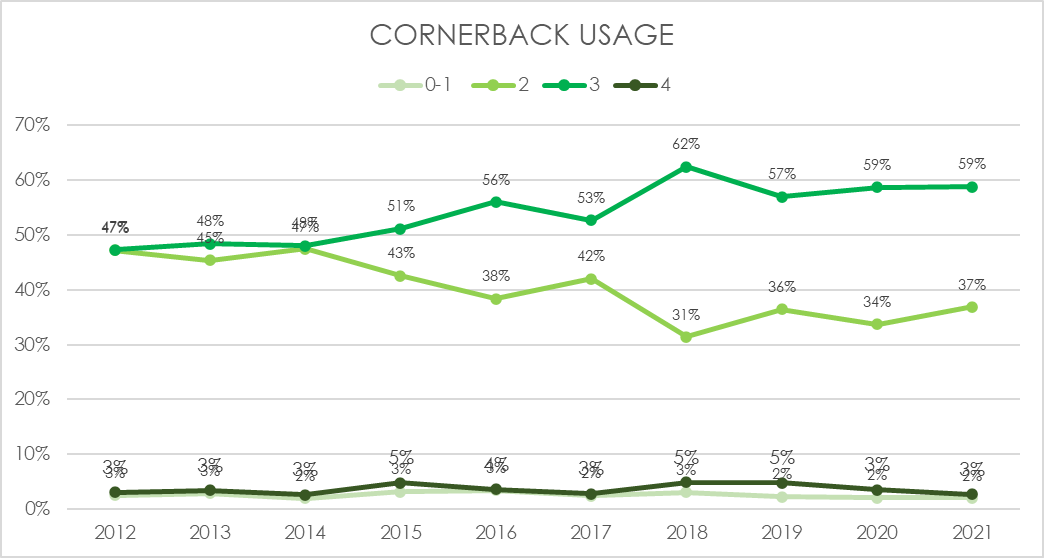
Here you can see that classic dispersion you probably expected. Back in 2012, it was a roughly equal split between two- and three-corner packages. Now we see roughly 60% more three-corner looks.
So how does this fit with wider package use?
Here you can see usage of the biggest single defensive packages in the modern NFL. There are many, many more, but these ones make up the lion’s share of all NFL snaps.
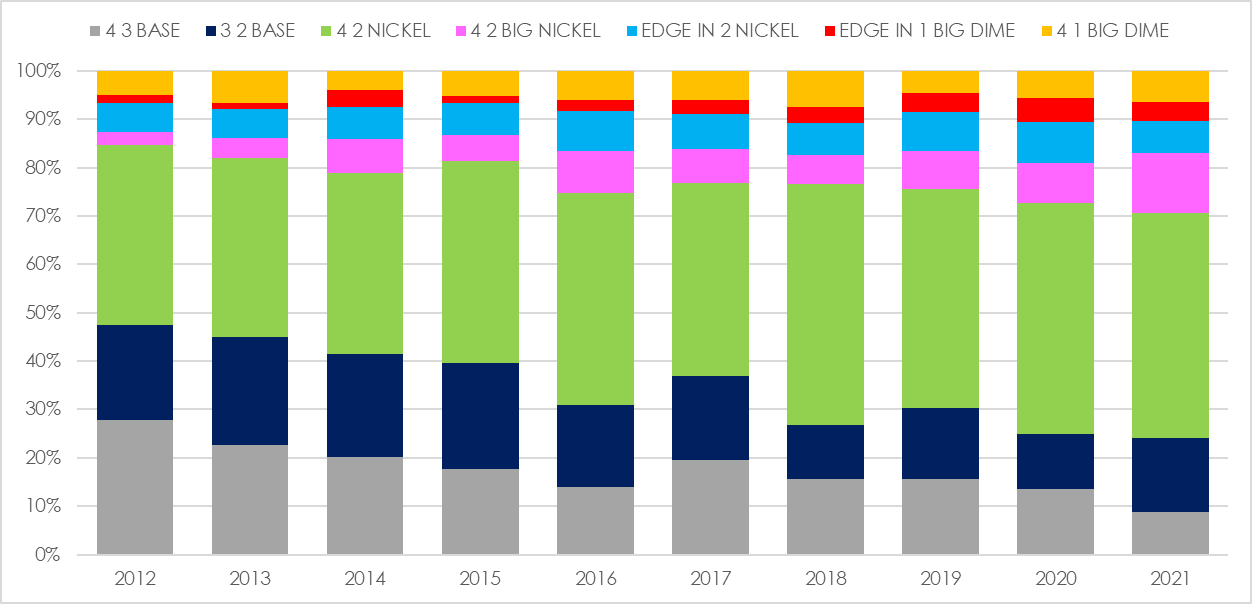
As we’ve covered already, base packages are falling even faster than most people think. Back in 2012 they made up around 46% of all defensive snaps. In 2021 that had fallen to under 25%.
At the same time, multiple-safety packages (big nickel and big dime here) are on the rise. They made up about 10% of 2012 snaps. And about 22% in 2021.
Implications for fantasy leagues
The majority of IDP leagues either feature a low number of IDPs when everyone has access to good, solid players, or leagues that start 11 IDPs and try to fit them into a ‘realistic’ formation. This means that in your 11-IDP league, you probably have to start two corners and two safeties each week, with maybe the options to add another one as a flex. You try to avoid doing this because an extra LB or DE tends to be a better option.
Given what you now know about how the NFL deploys defensive backs, this probably does not seem realistic at all. The NFL deploys more than two corners on 61% of all snaps, and three safeties on about a quarter of snaps. Add in the linebacker trends from the last article and suddenly your league looks like the NFL from the decade before last instead of the modern game.
This is why we see such a glut in defensive backs in fantasy leagues. There are over 150 starting DBs per week in the NFL and your fantasy league starts just 48 of them. No wonder they feel so utterly replaceable and random.
If you redress how many LBs you start vs DBs, then you’ll end up with a more realistic experience that also feels less about sheer luck.
Dynasty strategic exploitations
It’s tough to really make positive moves here, and a lot of what you can do is about not investing in the positions.
As we’ve covered before on DLF, the repeat rates at both defensive back positions are significantly lower than in other positions. So even if you’re holding a guy that had an elite 2021, the chances are very much in favor of him not even being a top-24 guy in 2022.
The only sensible strategy that comes from that insight is not investing resources into them. Be the last person to draft them in a startup. Avoid drafting them at all in rookie drafts. Trade any who happen to enjoy fine seasons with gusto.
It’s extremely tempting to believe that the guy who just scored brilliantly for you will buck the trend and continue to do so, but it rarely happens.
At the same time, you can capitalize on league trends – at safety in particular. Most football fans still categorize each and every NFL defense as having a strong safety and a free safety. This is increasingly not true. We’re in an era of teams moving back to two-high safety looks where safeties play left and right instead of box and deep. You can manipulate perceived value by leaning into this. If someone wants to buy your safety, then talk about him as a confirmed strong safety and how that will help his scoring. They’ll probably want to believe it, or they wouldn’t be trying to buy him in the first place.
Hopefully this series of articles has given you a clearer idea of how the league is utilizing different fronts and what it means for the future. And that information can help you build better leagues and better teams in them.
Thanks for reading and good luck.
- Ten IDP Fantasy Football Stats You Need to Know after Week 16 - December 29, 2023
- Ten IDP Fantasy Football Stats You Need to Know after Week 15 - December 22, 2023
- Ten IDP Fantasy Football Stats You Need to Know after Week 14 - December 14, 2023



































































